Introduction
E-cigarettes are becoming popular around the world as an alternative to traditional tobacco products. But, few people have a clear understanding of the complex process behind the production of e-cigarettes. The purpose of this article is to provide a comprehensive overview of the e-cigarette manufacturing process, shedding light on the various components involved, the manufacturing process, and quality assurance measures.
Vape components
To understand how electronic cigarettes are manufactured, it is first important to know what components make up an electronic cigarette and what the components do.
1. Battery
The battery is the heart of the e-cigarette and can be either integrated or removable. The battery provides the power necessary to heat the coils and convert the e-cigarette liquid into an inhalable vapor. The capacity and voltage of the battery determine the performance of the device and battery life.

2. Mouthpiece
The part on which the user places his/her lips to inhale the vapor.
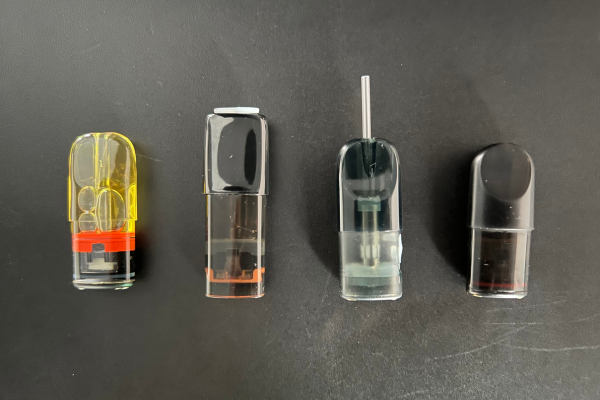
3. Atomizer/Transparent Atomizer/Tank
The atomizer, clear atomizer, or tank is the housing unit for the e-cigarette oil and coils and consists of several important parts.
Tank: the tank that stores the e-liquid and ensures a steady supply to the coil.
Chimney: the tube that connects the coil to the mouthpiece, allowing vapor to flow from the heating element to the user's mouth.
Glass Or Plastic Tube: the transparent housing that encapsulates the e-cigarette liquid, allowing the user to watch the level.
Base: the foundation of an atomizer that houses the coil and contains the airflow control mechanism.
Airflow Control Ring: Some e-cigarettes have an adjustable airflow control mechanism that allows the user to regulate the airflow into the device, which affects vapor production and throat hit.

4. Coil
The coil is a small piece of resistance wire that converts liquid into vapor and plays a key role in the operation of the e-cigarette. When an electric current flows through the coil, the coil heats up. This heat vaporizes the e-cigarette liquid soaked in the wick material.
Coil: The coil is made of materials such as Contair, stainless steel, and nickel, which have high resistance and high heating efficiency.
Coil Casing: This part wraps the coil and attaches it to the base or vape chamber of the atomizer.
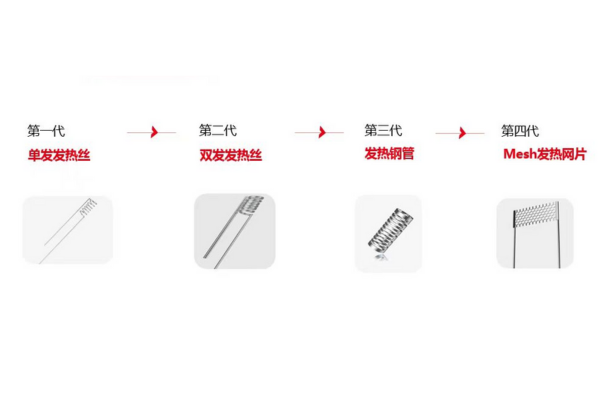
5. Wicking material
Wicking is usually made up of cotton or ceramic core material and is the conduit for the e-liquid. It draws the liquid from the tank and delivers it to the coil for vaporization, ensuring a consistent, smooth vaping experience.
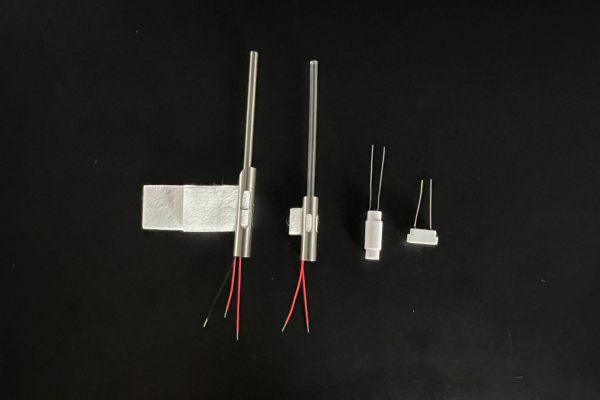
6. E-liquid
Often referred to as vape juice or e-juice, e-liquid contains flavorings (flavors), nicotine (if desired), and a mixture of propylene glycol (PG) and vegetable glycerin (VG), which are crucial factors in determining an e-cigarette's flavor, throat hit, and the amount of smoke produced. When the coil is heated, the e-liquid is converted into vapor, providing the user with a flavorful and nicotine-satisfying experience.
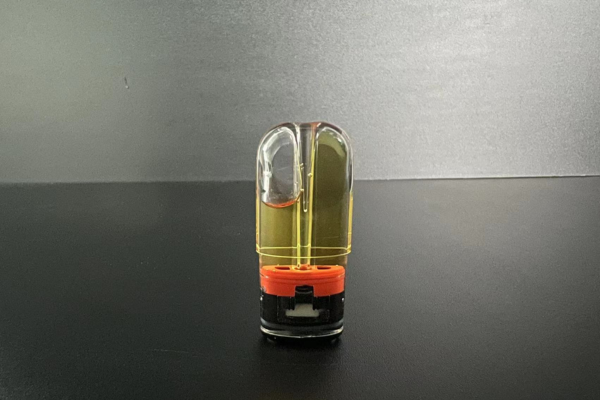
7. Buttons or Sensors
E-cigarettes are equipped with buttons or sensors to start the vaporization process.
Button: Pressing the button turns on the circuit that powers the coil and triggers the vaporization of the e-liquid.
Sensor: The sensor is designed to detect inhalation and activate the coil when the user takes a puff.

8. LED Indicators
Most e-cigarettes are equipped with LED indicators to provide visual feedback to the user:
Battery Life: This shows how much battery power is left, helping the user determine when it needs to be recharged.
Activation: illuminates when the device is in use, providing a clear signal of vaporization.
Warning: Displays warnings, error conditions, or safety alerts to ensure a safe vaping experience.
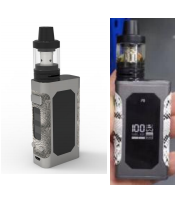
9. Charging Port
For rechargeable e-cigarettes, the charging port connects the device to a charger, enabling the user to charge the battery and extend vaping time.
It is important to note that the design and components of an e-cigarette may vary by brand and model. Besides, some advanced devices may have more features such as temperature control and power regulation. Always follow the manufacturer's instructions and safety guidelines when assembling and using an electronic cigarette.

Vape Manufacturing Process
The manufacturing process for e-cigarettes involves a series of steps that combine advanced technology, precision engineering, quality control measures, and compliance with safety regulations.
Step 1: Design and Development
The launch of every e-cigarette begins with careful design and development. Engineers and designers collaborate to conceptualize the shape, size, aesthetics, functionality, and user experience of the e-cigarette device. Detailed drawings and specifications are developed outlining the design of each component, providing a blueprint for the manufacturing process. This stage sets the stage for the next stages of production.
Step 2: Sample testing, mass production
According to the drawings and specifications, the manufacturer purchases components that meet the requirements, completes the sample assembly, and conducts testing. Only after the samples are tested to meet the requirements can we arrange to enter the next stage of mass production.
Step 3: Component Preparation and Inspection
Procurement Of Components: The factory procures the necessary details, including batteries, atomizers, coils, wick materials, mouthpieces, buttons, sensors, LED indicators, charging ports, and other parts required for the e-cigarette.
Inspection: The quality of the components is inspected for compliance with the required standards. Defective or substandard parts will be rejected from the production line.
Step 4: Coil Assembly and Startup
Coil Production: Coils are assembled using automated machinery or manual processes. Coil wire is cut to specific lengths and wrapped around a mold to form the coil shape. The coil is then checked for resistance and consistency.
Coil Filling: The coil is immersed in e-liquid to saturate the wick material and prevent dry hits during use.
Step 5: Atomizer and Vape Tank Assembly
Wicking Material Insertion: Insert the wicking material into the coil housing using an automated machine or by hand.
Coil Installation: Insert the coil into the atomizer and secure it in place. Attach the atomizer base and chimney to complete the atomizer assembly.
Vape Oil Tank: Assemble the tank that stores the e-liquid in the atomizer.
Step 6: Device Assembly and Testing
Battery Insertion: Solder the battery to the circuit board with the built-in microprocessor and insert it into the designated slot on the body of the device.
Pushbutton/Sensor Installation: Install the pushbuttons or sensors with the connecting circuit boards into the device.
LED Indicator Integration: LED indicators are integrated into the device and connected to the circuit board.
Quality Control: Each assembled device is tested to ensure that the pushbuttons, sensors, LED indicators, and other components work.
Step 7: Final Assembly and Quality Assurance
Tank Attachment: The completed assembled atomizer/tank unit is threaded or secured to the body of the device.
Charge Port Installation: If applicable, the charge port is integrated into the body of the unit.
Visual Inspection: The device is inspected to identify any scratches or defects in the components.
Quality Assurance: E-cigarettes undergo a variety of tests before being delivered to customers to ensure their safety and functionality. These tests include performance evaluations, leakage checks, battery capacity tests, safety features, and more.
Step 8: Packaging
Packaging: Package the device with the user manual, charging cable, and other accessories.
Labeling And Regulatory Compliance: The device is labeled with safety warnings, regulatory markings, and lot numbers to follow regulatory requirements.
The visual design, packaging, manuals, and printed materials of e-cigarettes play a pivotal role in their production process. These elements influence consumer choice. Studies have shown that design elements on product packaging have a significant impact on purchasing decisions. These elements can attract or deter potential buyers. So, creating exceptional packaging design is critical to establishing a market presence.
Contact us to customize your e-cigarette and receive a free design box and brochure pack.
Conclusion
Understanding the e-cigarette manufacturing process provides insight into the complexity and attention to detail that goes into making e-cigarettes. From the composition of the e-liquid to the precision assembly and quality assurance, every step of the process plays a crucial role in providing a safe and enjoyable e-cigarette experience.
If you have any questions about the production process of e-cigarettes or are interested in our e-cigarette products, please click BAE!







